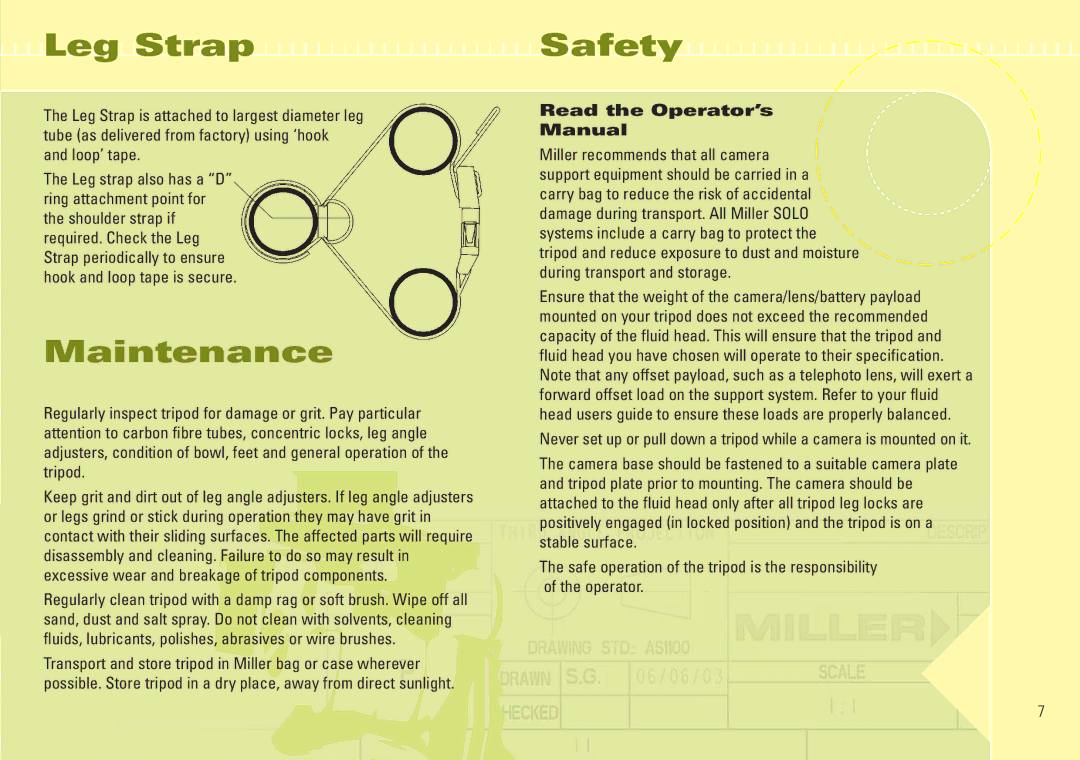1630, 1501, 1505 specifications
Miller Camera Support has long been recognized as a premier manufacturer of high-quality camera support solutions, with a reputation for delivering reliable and innovative products that cater to the needs of professional filmmakers and videographers. Among its extensive lineup, the Miller 1505, 1501, and 1630 tripods stand out as exceptional choices designed to offer stability, versatility, and user-friendly features for various filming environments.The Miller 1505 tripod is renowned for its outstanding load-carrying capacity, making it suitable for heavy camera setups. Weighing in at just 2.4 kg (5.3 lbs), it is highly portable yet robust, featuring durable aluminum construction. Its three-stage design allows for an adjustable height range, offering significant versatility while maintaining a sturdy base. The 1505 tripod also incorporates a mid-level spreader that enhances stability on uneven terrain.
In contrast, the Miller 1501 tripod is tailored for those requiring a lightweight solution without compromising on performance. It weighs a mere 1.9 kg (4.2 lbs) and boasts a compact size, perfect for run-and-gun shooting or traveling crews. The 1501's unique quick-release system allows for swift mounting and dismounting of the camera, saving valuable time during set changes. Its robust design with high-quality materials ensures it can withstand the rigors of active shooting environments.
The Miller 1630 tripod provides an excellent balance of stability and freedom of movement, targeting cinematographers who work in dynamic shooting scenarios. This rugged tripod features an advanced clamping mechanism that offers precise height adjustment with ease. The four-stage design enhances the tripod's flexibility and adaptability for various filming positions. Additionally, the 1630 includes interchangeable rubber feet that can be replaced with spikes for improved grip on different surfaces.
All three tripods are equipped with innovative features that enhance their functionality. Rapid telescoping legs aid in quick setup and takedown, while a dedicated leg-locking system ensures secure stability during filming. The use of durable materials and precision engineering across the range guarantees longevity and reliability, essential factors in professional video production.
In summary, Miller Camera Support's 1505, 1501, and 1630 tripods represent exceptional engineering and design, catering to diverse filming needs. Each tripod offers unique advantages while sharing core characteristics of durability and stability, making them invaluable assets in any filmmaker's toolkit.

